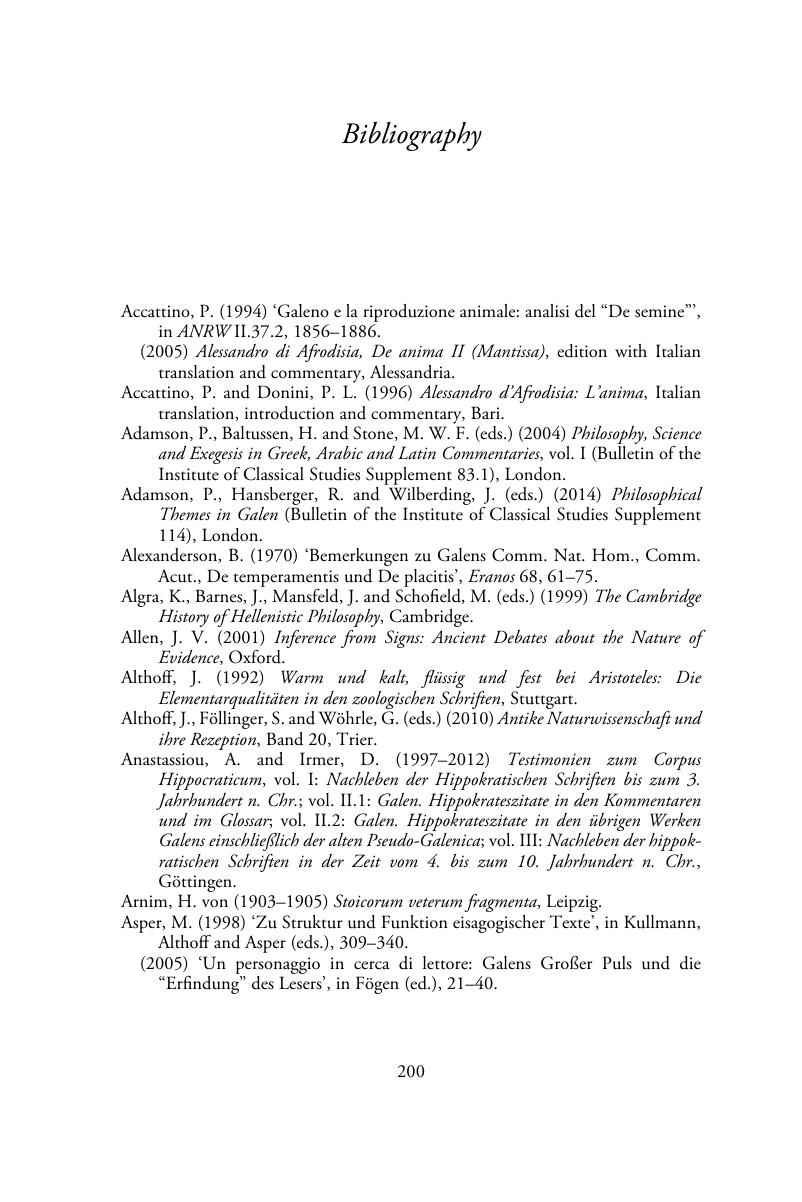Book contents
- Galen: Works on Human Nature
- Cambridge Galen Translations
- Galen: Works on Human Nature
- Copyright page
- Contents
- List of illustrations
- Series editor’s preface
- Preface and acknowledgements
- Note on citations and abbreviations
- Introduction
- Mixtures*
- List of departures from Helmreich’s edition
- List of titles and abbreviations of Galen’s works
- Bibliography
- English–Greek glossary
- Greek word index
- Index of names
- Index of passages cited
- General index
- References
Bibliography
Published online by Cambridge University Press: 28 December 2018
- Galen: Works on Human Nature
- Cambridge Galen Translations
- Galen: Works on Human Nature
- Copyright page
- Contents
- List of illustrations
- Series editor’s preface
- Preface and acknowledgements
- Note on citations and abbreviations
- Introduction
- Mixtures*
- List of departures from Helmreich’s edition
- List of titles and abbreviations of Galen’s works
- Bibliography
- English–Greek glossary
- Greek word index
- Index of names
- Index of passages cited
- General index
- References
Summary

- Type
- Chapter
- Information
- Galen: Works on Human Nature , pp. 200 - 221Publisher: Cambridge University PressPrint publication year: 2019

